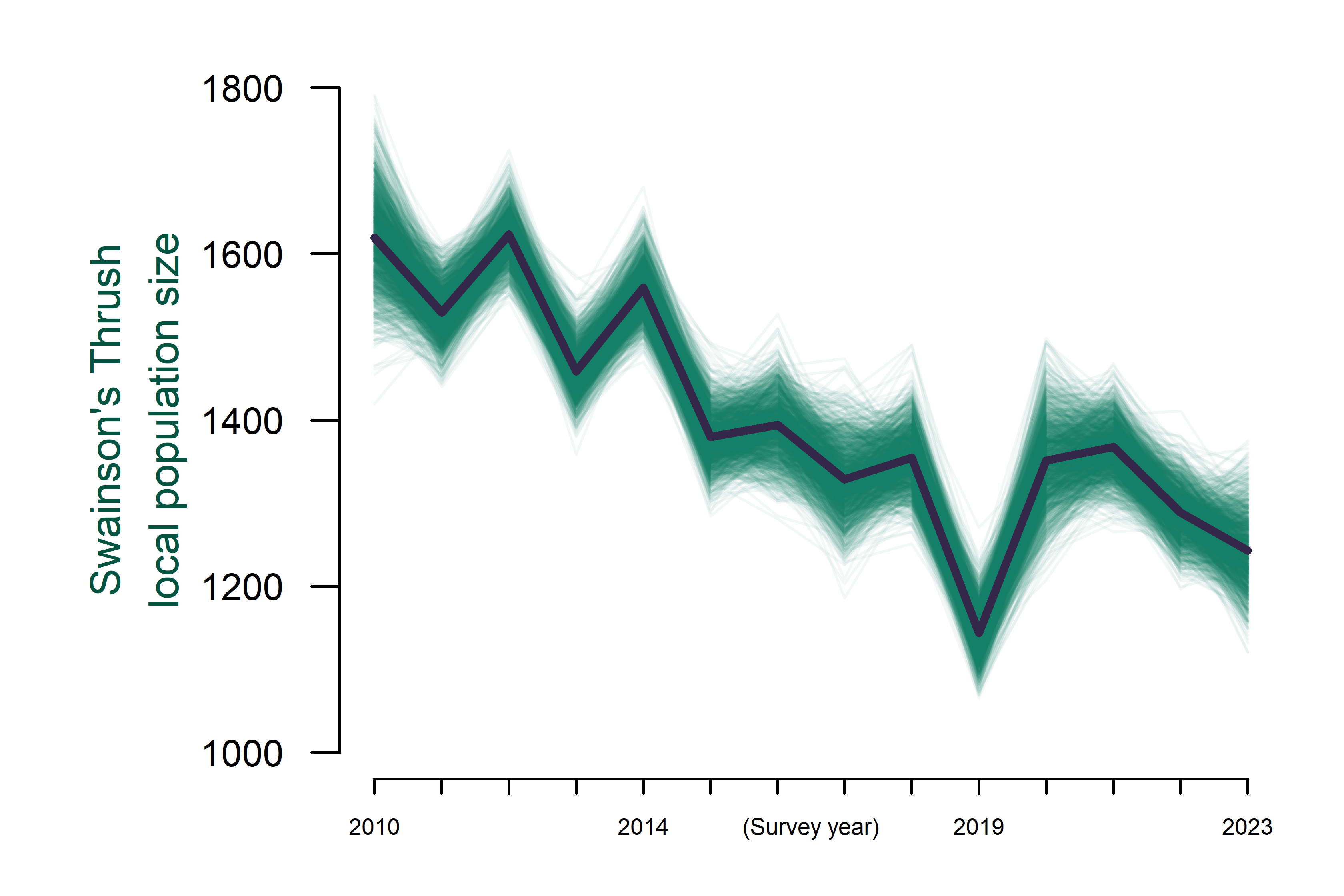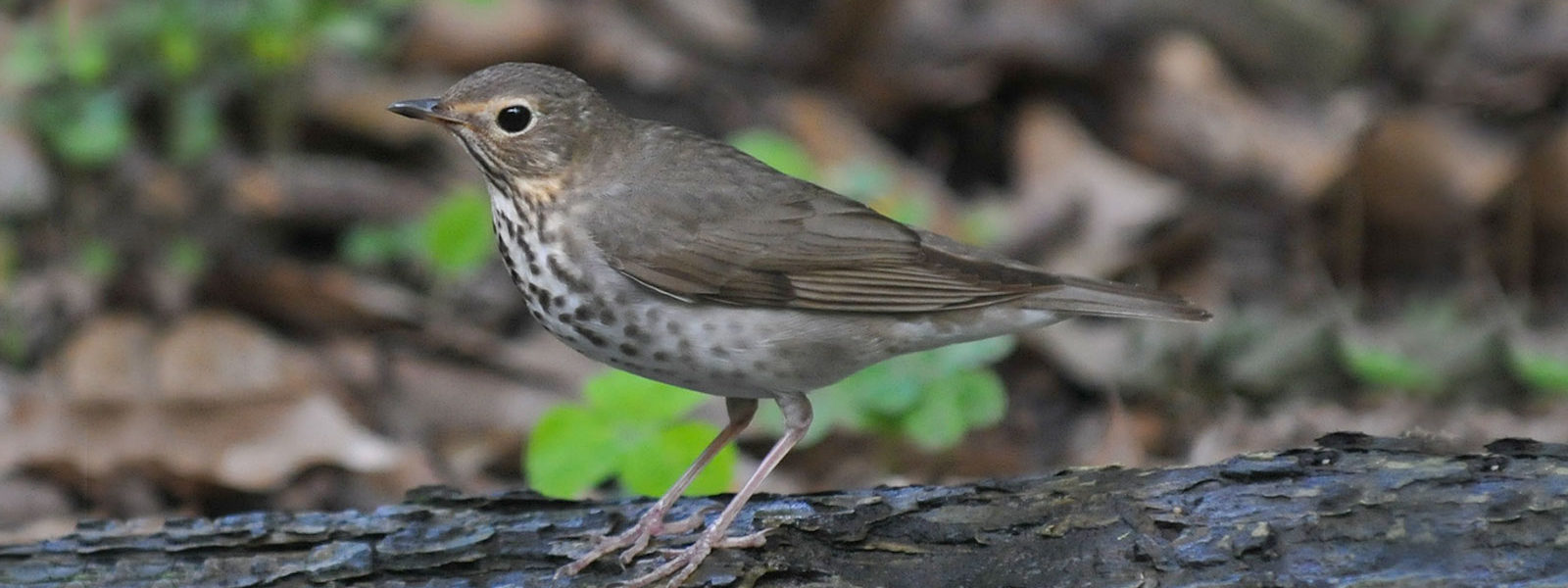The State of Swainson’s Thrushes
Regionally: Declining

The mean (thick, dark line) annual estimate of Swainson’s Thrush abundance—calculated as the annual sum of estimated Swainson’s Thrush within the local area (a 4-hectare circle) surrounding all 791 Mountain Birdwatch sampling stations. The thinner, lighter lines represent less probable estimates of the annual abundance.
Swainson’s Thrush numbers have likely decreased since Mountain Birdwatch began. Annual fluctuations are evident, but overall counts of this species have steadily declined in the northeastern U.S. over the last half-century. Mountain Birdwatch data indicate an average decline of -2.04% per year (80% credible interval = -2.91% to -1.17%) in the mountains of our region; this trend equates to a -23.48% decline in population (80% credible interval = -31.86% to -14.17%) between 2010 and 2023.
Mean annual population trends and population change (with 80% Bayesian credible intervals [CRI]) for Swainson's Thrush from 2010 through 2023. A red dot| Region | Mean annual trend (%) | Trend (80% CRI) | Probability of decrease | Probability of increase | Population change (%) 2010-2023 | Population change (80% CRI) |
|---|---|---|---|---|---|---|
| All regions | (-2.91, -1.17) | 0.99 | 0.01 | -23.48 | (-31.86, -14.17) | |
| New York (Catskills) | (-2.90, -0.28) | 0.94 | 0.06 | -19.23 | (-31.81, -3.53) | |
| New York (Adirondacks) | (-3.87, -1.59) | >0.99 | <0.01 | -30.19 | (-40.12, -18.78) | |
| Vermont | (-2.67, -0.62) | 0.98 | 0.02 | -19.45 | (-29.69, -7.75) | |
| New Hampshire | (-3.06, -1.23) | >0.99 | <0.01 | -24.68 | (-33.24, -14.86) | |
| Maine | (-2.58, -0.61) | 0.98 | 0.02 | -18.79 | (-28.84, -7.62) |
Globally: Declining
Trend estimates from the North American Breeding Bird Survey and eBird largely agree with each other and Mountain Birdwatch data. These data sources indicate modest, widespread declines in Swainson’s Thrush numbers throughout North America (~0.4% per year). These declines appear to have begun in the early 1980s, and are most severe across the northeastern U.S. and southeastern Canada. They have disappeared from many locales, such as coastal areas and major interior valleys, that they once inhabited in California. Counts of this species made at several migratory stopover sites (e.g., Long Point Bird Observatory) have declined as well. Areas where population trends are increasing for Swainson’s Thrush include the the British Columbia coastal forests and Alaska.


